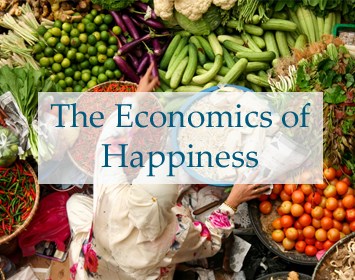ŌĆ£The 500 richest people in the worldŌĆ”gained a combined $1.2 trillion in wealth in 2019, further exacerbating inequities that have not been seen since the late 1920sŌĆ”Eight of the 10 richest people in the world are from the U.S.ŌĆØ ŌĆöBloomberg, 12/27/2019
Why, in the richest of countries ŌĆō the United States, are 40 million people (or 1 in 8) on food stamps?
Nearly 25 percent of homeless people are working. Why are working people living out of their cars, under bridges and in parks?
Why is there an epidemic of ŌĆ£deaths of despairŌĆØ by suicide, alcohol and drugs?
The United States has the lowest life expectancy ŌĆō a snapshot of a countryŌĆÖs overall health ŌĆō of comparable well-to-do countries, lower than CanadaŌĆÖs by 4 years and lower than that of our low-income socialist neighbor Cuba.
Why, despite our touted economic expansion under Trump, do 40-50% of Americans not have $400 readily available for emergencies?
The average number of years US people live has been dropping since 2014, due in large part to the increase in suicides, drug overdoses and alcohol poisoning among midlife adults, across all racial groups. Parallel with this tragic trend is growing income inequality or the gap in income and wealth between the richest people and the rest of us. By September 2019, this gap had reached its highest level since the Great Depression.
One factor in this growing inequality gap is the 2017 Trump-Republican Tax Cut. Despite the speechifying that the 2017 tax cut would increase jobs, raise salaries and give every working household a cut in their taxes, the richest 1% have come out the winner. In 2020, they will enjoy an average tax cut of $50,000 while the bottom 80% will average $645. Thanks to tax cuts for corporations, 91 profitable corporations, including Amazon and General Motors paid no corporate income taxes in 2018. Despite the promise that the tax cut would increase working families salaries by $4,000 to $9,000, median family income grew by $514 in 2018, the year after the law went into effect. Our national debt has jumped to nearly $1 trillion since the tax cut.
The United States ranks highest in income inequality of all wealthy countries. Correspondingly we rank highest in ill health and social problems, compared with other rich, developed countries. And, conversely, the Scandinavian countries and Japan, where income and wealth are more fairly distributed, fare best in health and social well-being. Moreover, the same pattern prevails among all of the 50 US states, such that those with the highest gap between wealthy and the rest of the state, experience more poor health and social problems.
Why have young students and adults across the United States reported dramatic increases in anxiety in surveys from the 1950s through the 1990s? Mental disorders associated with anxiety parallel this trend of increasing income inequality between the rich and the rest as does the number of people disabled by mental disorders who qualify for Social Security Disability Insurance.
Studies link these trends in anxiety and resulting mental disability to the finding that community life is weaker in societies with bigger income gaps between the rich and the rest. Greater income differences make class differences ŌĆō between the poor, the working class, the shrinking middle class and the wealthy ŌĆō more stark and more powerfully felt by those less equal. Material wealth, which is conspicuously on display in more unequal societies, increasingly replaces our sense of inner well-being as the measure of oneŌĆÖs value.
Not surprisingly, community life, measured by involvement in local groups, voluntary organizations and civic associationsŌĆōoften called social cohesionŌĆōis more robust in more equal societies. This, in turn, feeds social trust and helps explain why rates of homicide are consistently lower in more equal societies.
So what to do? Here are a handful of solutions. Increase cooperative and employee-owned companies; place employees on company boards; rebuild the union movement; reduce the ratio of CEO pay to the average of worker pay, and support the Fight for $15. All of these proposed initiatives are reinforced by studies showing that they increase worker productivity, satisfaction and innovation as well provide fairer wages in more equal work places. The Fight for $15, a national campaign for $15/hr. minimum wage is especially vital, given nearly two-thirds of the minimum wage workers in the United States are women, a wage that consigns them to poverty.
We all have a stake in this issue ŌĆō our countryŌĆÖs extreme wealth gap. Reducing it will rescue the working poor and the shrinking middle class and promote economic equality for women and people of color.
Pat Hynes, a retired Professor of Environmental Health at Boston University School of Public Health, directs the Traprock Center for Peace and Justice. traprock.org


